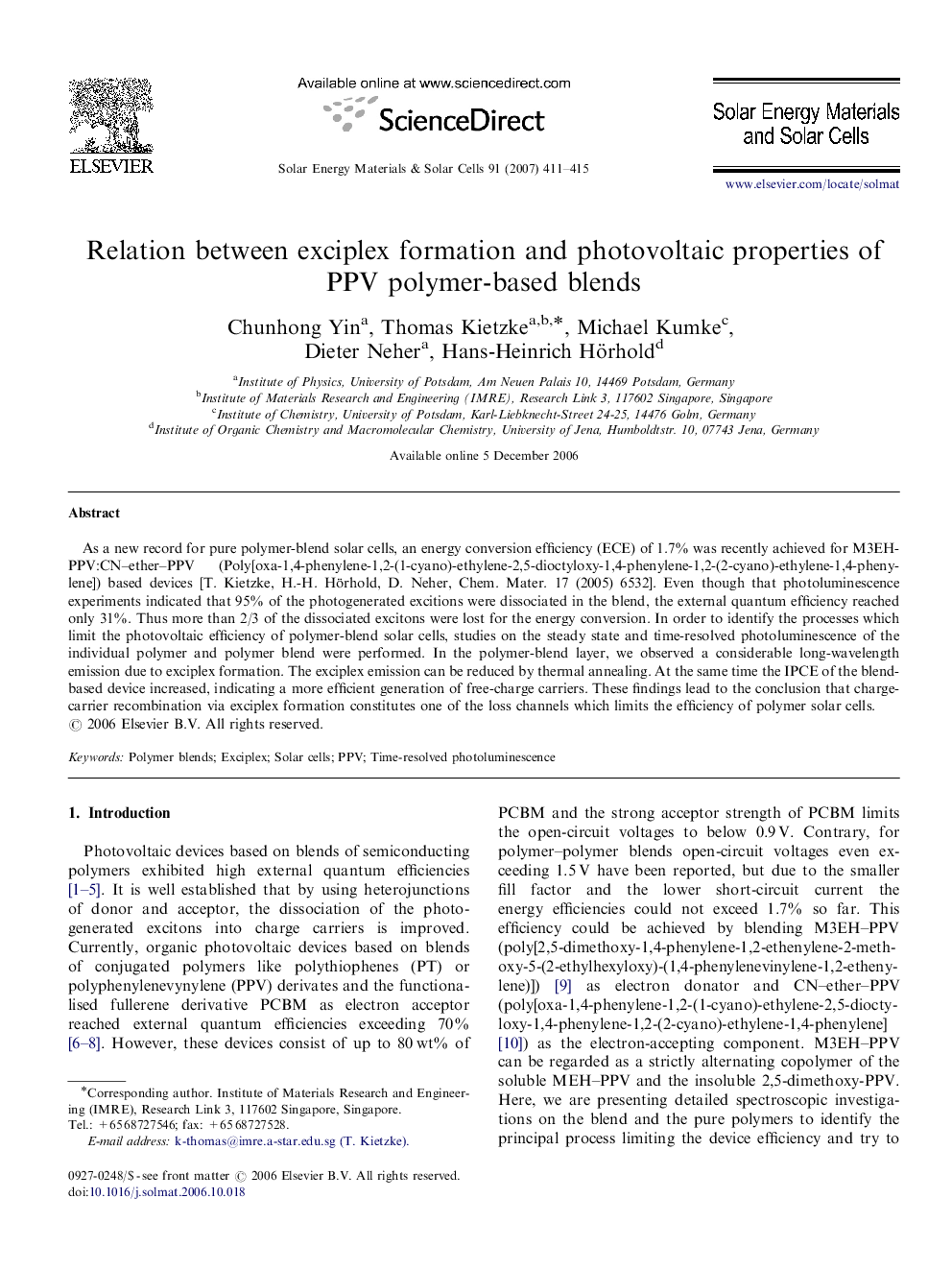| Article ID | Journal | Published Year | Pages | File Type |
|---|---|---|---|---|
| 80607 | Solar Energy Materials and Solar Cells | 2007 | 5 Pages |
As a new record for pure polymer-blend solar cells, an energy conversion efficiency (ECE) of 1.7% was recently achieved for M3EH-PPV:CN–ether–PPV (Poly[oxa-1,4-phenylene-1,2-(1-cyano)-ethylene-2,5-dioctyloxy-1,4-phenylene-1,2-(2-cyano)-ethylene-1,4-phenylene]) based devices [T. Kietzke, H.-H. Hörhold, D. Neher, Chem. Mater. 17 (2005) 6532]. Even though that photoluminescence experiments indicated that 95% of the photogenerated excitions were dissociated in the blend, the external quantum efficiency reached only 31%. Thus more than 2/3 of the dissociated excitons were lost for the energy conversion. In order to identify the processes which limit the photovoltaic efficiency of polymer-blend solar cells, studies on the steady state and time-resolved photoluminescence of the individual polymer and polymer blend were performed. In the polymer-blend layer, we observed a considerable long-wavelength emission due to exciplex formation. The exciplex emission can be reduced by thermal annealing. At the same time the IPCE of the blend-based device increased, indicating a more efficient generation of free-charge carriers. These findings lead to the conclusion that charge-carrier recombination via exciplex formation constitutes one of the loss channels which limits the efficiency of polymer solar cells.
